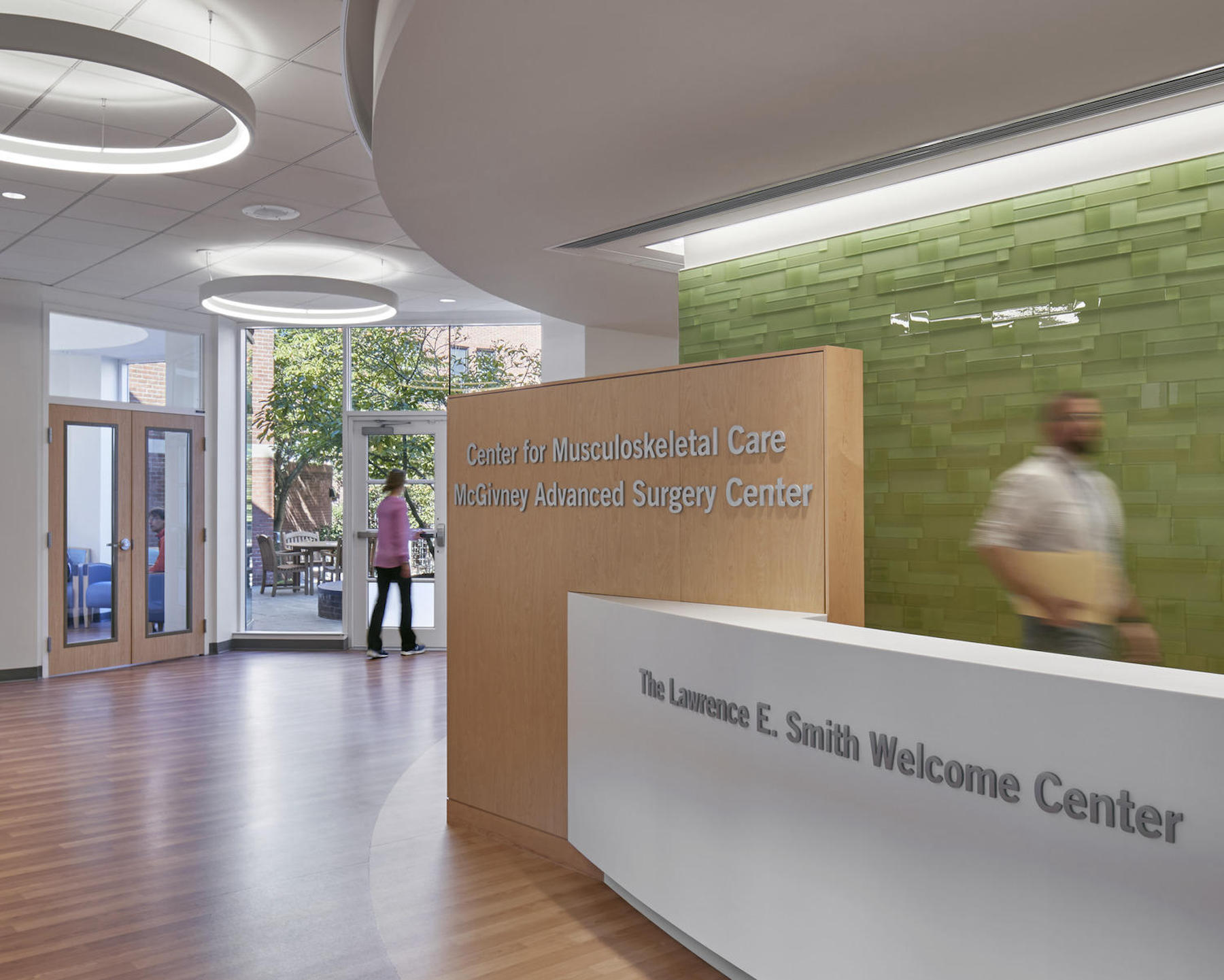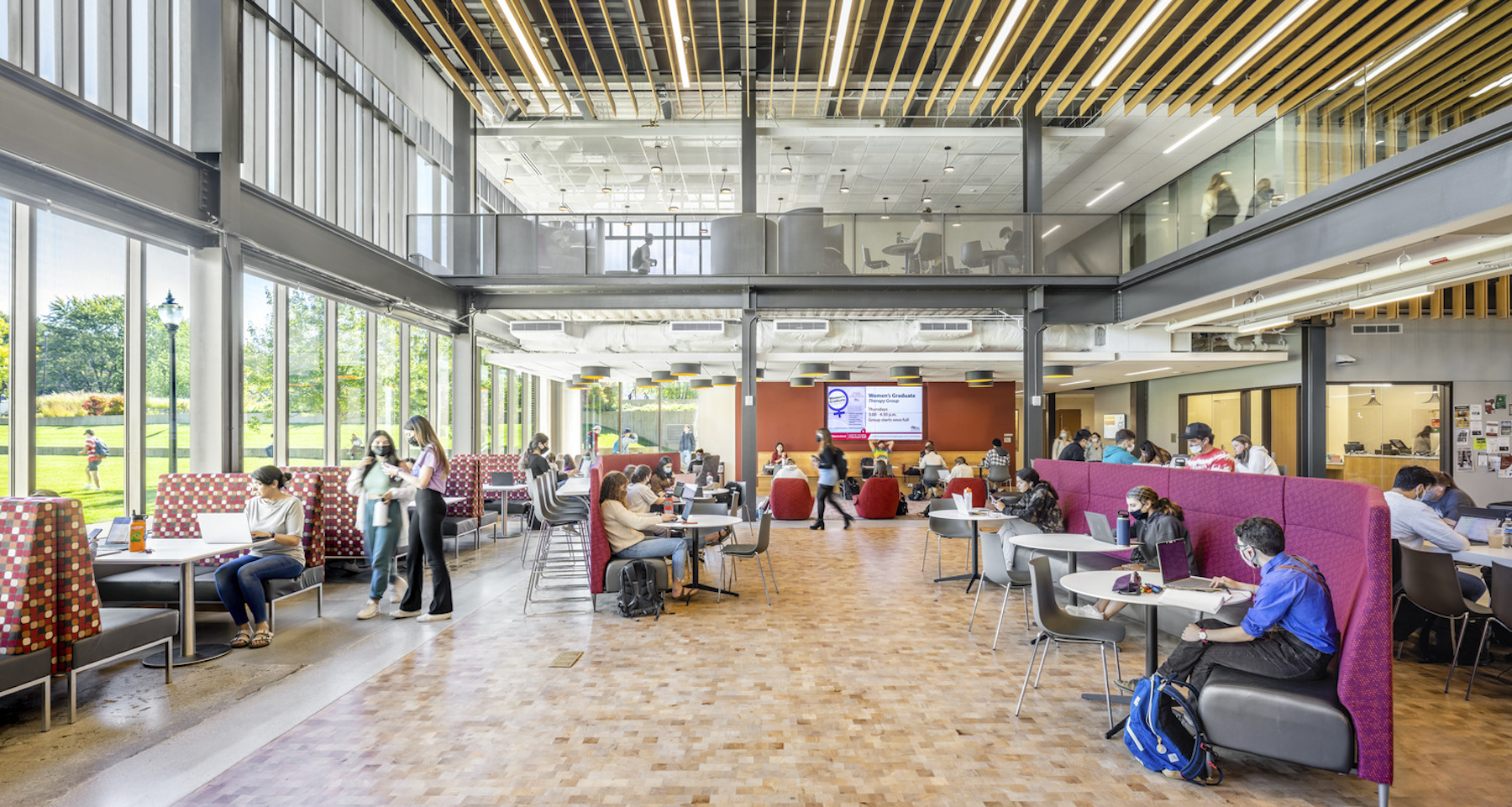As our world reopens from COVID isolation, we are entering back into undefined territory – a form of hybrid existence. As architects, in our hybrid, post COVID world, technology is driving design and the use of physical spaces across multiple disciplines – to continue providing people with individualized experiences, we need to innovate rapidly, think flexibly, and create simple, intuitive spaces that support positive experiences.

In the healthcare industry, the pandemic reshaped how hospitals and health systems integrate digital tools into patient care. Zero contact processes like virtual waiting rooms, curbside or mobile check-in, digital intake, and contactless paying, have transformed the traditional patient experience. Being able to fill out necessary forms at home or in the car, allows patients to bypass the waiting room, reducing time spent and risk of exposure/infection. The adoption of telehealth video visits for patients is also affecting the design of medical office buildings. Like a “modern day house call,” telehealth technology allows people to stay in their home for a real-time consultation with a healthcare provider on a mobile device. A telemedicine session eliminates the need to travel to and from the office, therefore reducing time spent in a waiting room for an average visit from 2 hours down to 15 minutes.

Face-to-face visits are not going away as they are currently perceived as more personal and more thorough, but the conveniences of telehealth may soon become preferred and normalized in the future. The wider acceptance of online interactions may lead to a new type of waiting room and more efficient doctor visits. Maybe we’ll see telehealth in smaller, more efficient medical offices where rooms are more compact than traditional exam rooms and fewer are required for patient visits. Our designs need to be flexible to accommodate the continuing evolution of the patient experience and delivery of care.
Colleges and universities were also quick to adapt when the pandemic shut down schools and forced them to find other ways of reaching students when they couldn’t be in a classroom. They embraced technology and learned to use collaboration software, video conferencing, the cloud — anything that supported inclusive, innovative, and secure learning experiences for their students.

Technology, the hardware and the software, was the easy part, but the challenges soon became apparent. The pivot from in-person to digital was so quick that teachers had to reconceive their digital classrooms and structure curriculum for remote learning in inventive ways. The “digital divide” also created complications for students who didn’t have access to a smartphone, a tablet, computer, robust internet, or even a place to sit and learn. And let’s not forget about the affects remote learning had on the emotional and social health of students – the obstacles taught us there’s still so much more we can do to accommodate technological components in higher education.
Many institutions are taking what they learned during the pandemic and transforming pedagogical norms to integrate remote learning aspects with the traditional classroom experience. Digital classrooms offer real-time participation and parallel learning via chat allows for diverse voices to engage in new ways. With all participants on screen in equal sized boxes, online virtual sessions can provide more equity in interactions between teachers and students by breaking down the traditional hierarchy of a classroom setting. Online classes, both virtual and hybrid, have provided students with asynchronous learning opportunities that align with their interests, schedule, and learning styles.


Whether in person or remote, classrooms need to be active and engaging to allow students to be part of a learning community and find success. Even with skepticism about hybrid teaching models, classroom design is moving away from a traditional lecture hall to a “Zoom-room” that is packed with technology that supports many forms of communication and learning. The expectation is that in-person and remote students should be able to connect to each other from any device at any time. These spaces go beyond IT and AV – they need interactive collaboration tools, integrated lighting control, fine-tuned acoustics, and the infrastructure flexibility to support the next generation of tools.


COVID-19 jump started a digital transformation in all aspects of our lives. As an industry, designers are always looking forward, but in these changing times, we don’t know exactly where technology is leading us. New approaches integrated with innovative technologies can generate new opportunities and outcomes, improved student success, improved patient health, and new versions of our built environments. How our clients’ current expectations evolve will be a key driver for where the next technological transformation takes us.
The post "The technology balancing act" appeared first on Building Design & Construction








0 Comments